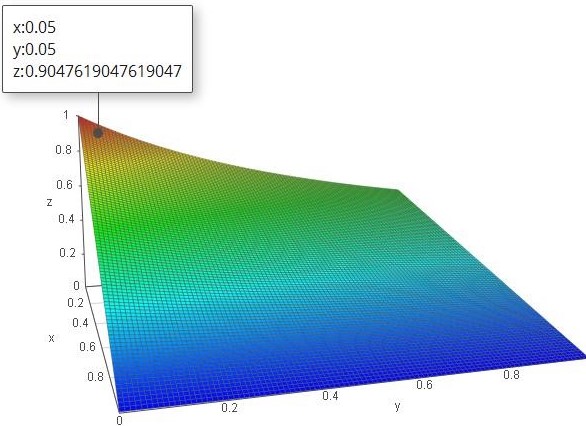Realistic Gold to Silver Ratio
Consider the gold to silver ratio denoted by G/S. This is just the ratio of the spot price of gold to the spot price of silver at a point in time. If G/S = R, where R is an average of historical G/S, many silver valuations are calculated as S = G/R.
Many gold and silver investors like interpret the gold to silver ratio as: if you sell 1 troy oz gold, you will receive R troy oz of silver. Consider the current G/S = 64.85. If I sell 1 troy oz gold for the current spot of $1,845, I can buy 64.85 troy oz of silver at the current spot of $28.45. This interpretation of the G/S ratio is very naive, because it ignores the real-life frictions of buying and selling (not to mention other costs such as shipping, storage, convenience fees, foreign exchange rates, etc.). Companies will charge you a certain percent to sell your gold, and a certain percent to sell you silver. They do this because they are a company (profit seeking) and they are market makers. In other words, they need to pay bills and have a little leftover as well as if they didn't exist you couldn't sell your precious metals (or at least not sell them as easily or as cheaply).
We assume that the percent you get charged to sell your 1 troy oz gold is X and the percent you get charged to buy silver is Y. What will happen is, G/S will be reduced to [G(1-X)]/[S(1+Y)] or (G/S)*[(1-X)/(1+Y)]. The interpretation of the ratio (1-X)/(1+Y) is, if you thought you'd get G/S silver troy ounces at the end of your transactions, you are only getting (1-X)/(1+Y) percent of that. Put another way, you are getting 1-[(1-X)/(1+Y)] percent less.
Below is a graph of the function z = (1-X)/(1+Y), which is a sloping 3D surface. We can see that for small X and Y, (1-X)/(1+Y) isn't too drastic. However, as X and Y increase, (1-X)/(1+Y) decreases considerably.

Consider the current gold and silver spot prices at the time of writing, and X = 5% and Y = 5%. What you will be able to sell your 1 troy oz of gold for goes from $1,845 to $1,845*(1-.05) = $1,845*.95 = $1,752.75. This can be interpreted as you losing $92.25.
For silver, what you are being charged to buy went from $28.45 to $28.45*(1+.05) = $28.45*1.05 = $29.87 per troy oz. In other words, you have just been charged $1.42 extra per silver troy oz.
If you now calculate G/S, you get G/S = $1,752.75/$29.87 = 58.67. First, this represents a $1.42 * 58.67 = $83.46 total loss in silver. Second, this is 64.85 - 58.67 = 6.18 troy oz silver less than you thought you were getting using the naive G/S. Your total loss in dollars is $92.25 + $83.46 = $175.71.
Therefore, for valuation of silver, instead of S = G/R, where R is an average of historical G/S, consider S = G/R*, where R* is an average of historical (G/S)*[(1-X)/(1+Y)].
Note that the percents we used for X and Y were both 5%. In real life these percents are often different. Second, while these percents can be less than 5%, they can also be higher than 5%. For example, if we use X = Y = 10%, we see that (1-X)/(1+Y) = 81.82%, the new G/S is 53.06. Like everything else economic, the X and Y percentages will fluctuate, so be sure to calculate (G/S)*[(1-X)/(1+Y)] instead of just the naive G/S. If you are selling and buying metals, and there is some spike in X or Y, be cautious if your investing is based in terms of the naive G/S. Of course, you only need to sell your gold if the gold spot and X work for you. Also, after you sell your gold, you can simply wait before buying silver. There is no rule that says you must buy silver immediately after selling your gold. Simply wait until the silver spot and Y work for you.
Disclaimer: We do not provide personal investment advice and we are not qualified licensed investment advisors. We are amateur investors. All information found here, including any ideas, opinions, views, valuations, predictions, forecasts, commentaries, suggestions, expressed or implied herein, for gold and silver or for anything else, are for informational, entertainment, or educational purposes only and should not be construed as personal investment advice. While the information provided is believed to be accurate, it may include errors or inaccuracies. We will not and cannot be held liable for any actions you take as a result of anything you read here. Conduct your own due diligence, or consult a licensed financial advisor or broker before making any and all investment decisions.
